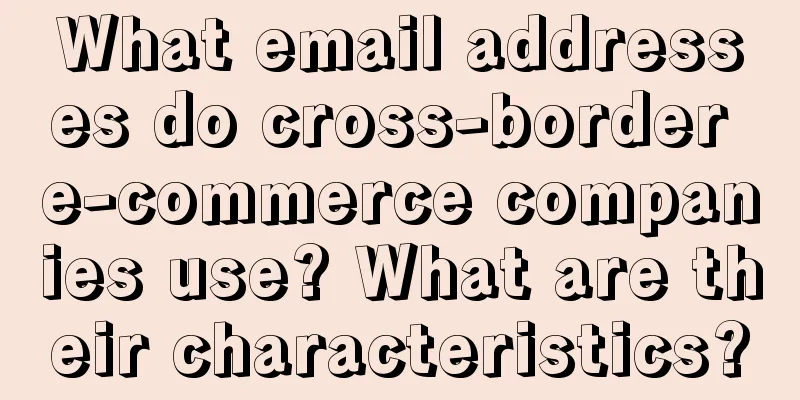Is there any risk in transferring an Amazon seller account? What are the risks of opening an Amazon store?

|
In the field of e-commerce, Amazon, as one of the world's most famous e-commerce platforms, has attracted many sellers to join its platform for sales. However, some sellers may consider transferring their Amazon seller accounts to others for various reasons. However, are there any risks in transferring Amazon seller accounts? This article will focus on this issue and deeply explore the risks and precautions of transferring Amazon seller accounts. 1. What are the risks of opening an Amazon store? Before talking about transferring Amazon seller accounts, we first need to understand the risks of opening an Amazon store: Account ban: Amazon strictly enforces its rules and policies. If a seller violates the platform regulations during the operation, the account may be banned. This may result in the store being unable to continue operating and will also affect the feasibility of transfer. Brand authorization: If sellers sell products on Amazon that require brand authorization, lack of legal brand authorization may cause problems. Buyers may not be able to continue selling these products after the transfer or face intellectual property disputes. Evaluation and reputation: The seller's evaluation and reputation on Amazon are crucial to the operation of the store. If the seller accumulates bad reviews during the operation, it may affect buyers after the transfer. Account History: Amazon will consider the seller's account history, including sales history, refund rate, etc. If the seller has problems in the past, it may affect the success of the transfer. 2. Risks and precautions for transferring Amazon seller accounts Transferring an Amazon seller account is a complex process that requires both sellers and buyers to fully understand the risks and precautions involved: Violation of Amazon policy: Amazon clearly stipulates that seller accounts cannot be transferred. If the seller is found to have violated this regulation, the account may be banned. Clear contract: If the parties decide to proceed with the transfer, a clear contract must be drawn up to clarify the rights and obligations of both parties to avoid future disputes. Brand authorization and intellectual property rights: If the seller sells products that require brand authorization, the buyer needs to ensure that the brand authorization is obtained legally. Otherwise, there may be intellectual property issues. Account history investigation: If a buyer plans to purchase an account, they need to conduct a thorough investigation of the seller’s account history to understand if there are any problems with the account. Trust issues: Transfer involves trust issues. Buyers need to ensure that the information provided by the seller is true and credible to avoid being deceived. Contact Amazon: If you decide to transfer, both buyers and sellers should contact Amazon in advance to understand its policies and requirements. Amazon sometimes requires a transfer intent application. |
Recommend
It is crucial to run Xiaohongshu's grass-roots conversion across the entire network and use this model well
How to use Xiaohongshu to achieve full network con...
How should the performance appraisal of Xiaohongshu’s media team be formulated and managed?
In Xiaohongshu, the media is a position with a wid...
Tencent, ByteDance, and Kuaishou are adding more investment. Who will lead the short drama race in the decisive year?
This year, the momentum of the short drama market ...
Is Taobao launching a heavy attack aimed at a big battle with Pinduoduo?
As competition in the e-commerce industry becomes ...
NetEase also created a Little Red Book!
NetEase recently launched a new content sharing pr...
What model does Shopify belong to? Introduction to the Shopify model
There are more and more Shopifys now, and more and...
What are the consequences of linking Amazon accounts? How to avoid linking?
If you have an account on Amazon, you need to abid...
How do I register a seller account on Wish? What are the requirements for seller registration?
To open a store on Wish, you need to register a se...
How to place Amazon DSP ads? What is the placement strategy?
The placement of Amazon DSP ads is different from ...
The “first bite of crab” of Xiaohongshu e-commerce, 9 yuan with free shipping, is it really tempting?
Since last year, small-scale merchants have begun ...
Is Shopee Singapore easy to operate? Which site is the first choice?
When entering Shopee, merchants need to think abou...
New retail has fallen in eight years, and platform business is returning to its essence
Exploring new traffic is the key starting point of...
Is the Shopee commission the same for each site? What are the differences between sites?
Nowadays, e-commerce is developing more and more r...
Alibaba's ChatGPT "Tongyi Qianwen" is officially announced! Tmall Genie and DingTalk's new features are revealed
At the 2023 Alibaba Cloud Summit, Zhou Jingren, CT...
How to advertise on Wish? What is the method?
As one of the cross-border e-commerce platforms, W...









